As the summer sun heats up, many dog owners might wonder if their furry friends can partake in a juicy slice of watermelon. This popular fruit is a delicious treat for humans, but can dog eat watermelon safely? Let’s delve into the various aspects of this question, including the benefits and potential risks to your canine companions.
Benefits of Watermelon for Dogs
Watermelon is not only refreshing but also packs several nutrients that can be beneficial to dogs. Here are some key benefits:
- Hydration: Watermelon consists of about 92% water, making it an excellent way to keep your dog well-hydrated, especially on hot days.
- Low in Calories: This fruit is low in calories, making it a guilt-free treat for dogs who might be watching their weight.
- Nutrients: Watermelon is rich in vitamins A, B6, and C, which support your dog’s overall health. Vitamin A promotes healthy skin and vision, while vitamin C can boost their immune system.
- Antioxidants: Watermelon contains antioxidants like lycopene, which can help protect your dog’s cells from damage.
How to Safely Serve Watermelon to Your Dog
Before sharing watermelon with your pet, it’s crucial to prepare it safely. Here’s how to do it:
- Start by washing the watermelon thoroughly to remove any pesticides or chemicals.
- Cut the watermelon to remove the rind and seeds, as they can pose a choking hazard and lead to gastrointestinal upset.
- Offer small pieces for your dog to enjoy. This will help you monitor their reaction and prevent overconsumption.
Potential Risks of Feeding Watermelon to Dogs
While watermelon has many benefits, there are also risks to consider. Understanding these can help you make better decisions for your furry friend:
- Digestive Issues: Some dogs might experience an upset stomach or diarrhea if they eat too much watermelon. Always introduce new foods gradually to gauge your dog’s tolerance.
- Seed and Rind Hazards: The seeds can cause blockages in your dog’s digestive tract, while the rind may be hard for them to digest, leading to discomfort.
- Allergic Reactions: While rare, some dogs may have allergies to watermelon. Watch for signs like itching, swelling, or gastrointestinal upset after consuming it.
How Much Watermelon Can Dogs Eat?
Moderation is essential when feeding your dog watermelon. A good rule of thumb is to offer small amounts as an occasional treat, not a regular part of their diet. Depending on your dog’s size, servings can vary:
| Dog Size | Recommended Serving |
|---|---|
| Small (up to 20 lbs) | 1-2 small cubes |
| Medium (21-50 lbs) | 2-4 small cubes |
| Large (51+ lbs) | 4-6 small cubes |
Alternative Ideas for Cooling Treats
If you’re looking for other refreshing treats for your dog, consider these alternatives as well:
- Cucumber slices
- Carrot sticks
- Frozen blueberries
These options are also hydrating and nutrient-rich, providing variety in your dog’s snack selection.
To sum it up, watermelon can be a safe and healthy treat for dogs when prepared correctly. Always make sure to monitor your dog’s reaction and consult with your veterinarian if you have any concerns. If you wish to read more about dog-friendly foods, you can check out resources from American Kennel Club or ASPCA.
Enriching your dog’s diet with safe, healthy fruits can enhance their quality of life, so why not try sharing a slice of watermelon on those sunny days?
How to Safely Prepare Watermelon for Your Dog
If you’ve ever wondered, “Can my dog eat watermelon?” the answer is yes! Watermelon can be a refreshing treat for your furry friend during hot weather. However, it is essential to prepare it properly to ensure it’s safe for them. Here’s how to safely prepare watermelon for your dog and what you need to keep in mind.
Choosing the Right Watermelon
When selecting a watermelon, opt for one that is ripe and free from bruises or soft spots. Ripe watermelon is usually more flavorful and has higher water content, which can help keep your dog hydrated. A fresh watermelon will also have seeds, which must be removed before feeding.
Preparation Steps
Follow these steps to prepare watermelon for your dog safely:
- Wash the Watermelon: Start by rinsing the watermelon under cool running water. This helps remove any dirt or pesticide residues.
- Cut the Watermelon: Use a sharp knife to cut the watermelon into manageable slices. Remove both the rind and seeds before serving.
- Cut into Small Pieces: Depending on the size of your dog, cut the watermelon flesh into small, bite-sized pieces. This prevents choking hazards, especially for smaller breeds.
- Serve Fresh: Offer the fresh watermelon pieces to your dog as a treat. You can also freeze them for a cool, refreshing snack on hot days!
Things to Avoid
While watermelon is generally safe for dogs, there are some precautions to keep in mind:
- Do not give your dog the rind, as it can cause gastrointestinal upset.
- Remove any seeds to prevent choking hazards or intestinal blockage.
- Feed in moderation; too much watermelon can lead to diarrhea due to its high fiber content.
Benefits of Watermelon for Dogs
Watermelon is not only a fun treat, but it also offers several health benefits:
- Hydration: Watermelon is about 92% water, making it an excellent snack for keeping your pup hydrated.
- Nutrient-Rich: It contains vitamins A, B6, and C, which are good for your dog’s immune system and skin health.
- Low in Calories: Watermelon is low in calories, making it a guilt-free treat for overweight dogs.
Monitor Your Dog
After introducing watermelon into your dog’s diet, it is crucial to monitor their reaction. Watch for signs of any allergies or digestive upset, such as vomiting or diarrhea. If you notice any adverse effects, consult your veterinarian.
Alternative Serving Options
If you want to get creative, consider these alternative ways to serve watermelon to your dog:
- Watermelon Smoothie: Blend watermelon with some plain yogurt for a cool smoothie treat.
- Frozen Watermelon Cubes: Puree watermelon and freeze it in ice cube trays for a refreshing frozen snack.
- Mix with Other Fruits: Combine watermelon with dog-safe fruits like blueberries or strawberries for variety.
When to Avoid Watermelon
While most dogs can safely enjoy watermelon, some may have underlying health issues that prevent them from consuming it. Health concerns such as diabetes might require you to avoid high-sugar fruits. Always consult with your veterinarian before introducing any new foods into your dog’s diet, especially if they have special dietary needs.
Further Readings on Dogs and Fruits
To learn more about other fruits that are healthy and safe for your dog, visit AKC’s Guide on Fruits Safe for Dogs. You can also check out WebMD’s Fruit Guide for Dogs for more insights.
Watermelon can be an enjoyable and hydrating treat for your dog when prepared correctly and served in moderation. By following these tips, you’ll ensure that your furry companion can safely enjoy the benefits this delicious fruit has to offer.
Alternatives to Watermelon: Other Safe Fruits for Dogs
As a dog owner, you may often wonder which fruits are safe and healthy for your furry friend. While watermelon is a popular choice due to its high water content and refreshing taste, there are several alternative fruits that can also provide nutritional benefits for your dog. Let’s explore some fruits that your canine companion can enjoy without the health risks associated with certain fruits.
Blueberries
Blueberries are not only delicious, but they’re also packed with antioxidants, vitamins, and fiber. These tiny fruits are great for dogs and can help support their immune systems. You can feed your dog fresh or frozen blueberries as a tasty treat. A handful here and there can boost their health.
Apples
Apples are a fantastic fruit for dogs, offering vitamins A and C, as well as fiber. Just be sure to remove the seeds and the core, as these parts can be harmful to your pet. Slice up an apple into bite-sized pieces, and your dog will appreciate the crunchy texture and sweet flavor.
Bananas
If your dog enjoys a sweet snack, bananas are an excellent option. They are rich in potassium, vitamins, and biotin. Serve bananas in moderation, as their high sugar content can lead to weight gain if overindulged. You can mash them into their food or give them whole as an occasional treat.
Strawberries
Strawberries are another safe fruit for dogs. They are low in calories and contain high levels of fiber and vitamin C. The antioxidant properties in strawberries can promote healthy skin and a robust immune system. As with all fruits, serve strawberries in moderation to prevent any potential digestive upset.
Peaches
Fresh peaches can be a delightful treat for dogs, providing vitamins A and C. However, ensure you remove the pit before offering them to your dog, as it contains cyanide and can be harmful. Fresh or frozen peach slices can be an enticing snack on a warm day.
Pineapple
Pineapple is full of vitamins, minerals, and digestive enzymes, making it a great choice for dogs. The juicy fruit is safe, but make sure to cut it into small, bite-sized pieces before serving. Avoid giving them the thorny skin and core, as they can cause stomach upset.
Cantaloupe
Cantaloupe is highly hydrating and a low-calorie option. This fruit contains vitamins A, B, and C that can improve your dog’s health. Just like with other fruits, feed cantaloupe in moderation, and be sure to remove the seeds and rind.
When introducing any new fruit to your dog, start slowly to ensure that they don’t experience any digestive issues. It’s a good idea to consult with your veterinarian to determine the best fruits for your dog’s specific dietary needs.
| Fruit | Benefits | Preparation Tips |
|---|---|---|
| Blueberries | High in antioxidants, low-calorie | Can be served fresh or frozen |
| Apples | Rich in vitamins A and C, fiber | Remove seeds and core; slice into pieces |
| Bananas | Good source of potassium and biotin | Serve in moderation; can be mashed |
| Strawberries | High in fiber, vitamin C, and antioxidants | Serve fresh and cut into small pieces |
| Peaches | Contains vitamins A and C | Remove the pit; serve fresh or sliced |
| Pineapple | Good source of vitamins and digestive enzymes | Slice into bite-sized pieces; avoid skin |
| Cantaloupe | Hydrating, low-calorie | Remove seeds and rind; serve fresh |
Remember that while fruits can be a healthy addition to your dog’s diet, moderation is vital. Too much of anything, even healthy items like fruits, can lead to digestive issues. Regularly consulting with a veterinarian can help you create a balanced diet for your dog.
For more insights on what other fruits are good for your dog, check out the American Kennel Club, where they offer guidance on safe treats for your pup, including fruits.
And if you’re curious about canine diets, consider visiting PetMD for more detailed articles. Keeping your dog healthy and happy is the priority, so enjoy exploring these delicious fruit options!
Recognizing Signs of Food Sensitivities in Dogs
Food sensitivities in dogs can be challenging to recognize, but understanding how to spot the signs can greatly improve your pet’s health and well-being. When dogs have food sensitivities, they may react negatively to certain ingredients in their diet. These reactions can manifest in various ways, and knowing what to look for is crucial for their care.
Common Signs of Food Sensitivities
Recognizing food sensitivities requires careful observation. Dogs may show a variety of symptoms when they are sensitive to certain foods. Here are some common signs to watch for:
- Skin Issues: If your dog develops itchy, flaky skin or hot spots, it might be a sign of a food sensitivity. Allergies can lead to skin irritation.
- Digestive Problems: Vomiting, diarrhea, or excessive gas can all indicate food sensitivities. Monitoring changes in your dog’s stool can provide valuable insight.
- Ear Infections: Frequent ear infections or a waxy build-up in the ears can be linked to dietary issues. This can be particularly common in breeds predisposed to allergies.
- Behavioral Changes: A dog may become more irritable or lethargic due to discomfort from food sensitivities. Keep an eye on your dog’s energy levels and personality.
Diagnosis and Testing
If you suspect your dog has food sensitivities, consulting a veterinarian is essential. A veterinarian can help you with diagnosing the issue through various methods:
- Elimination Diet: This is usually the first step. You’ll remove specific food items from your dog’s diet and then slowly reintroduce them one at a time to see which ones cause reactions.
- Blood Tests: Some vets may suggest allergy testing through blood work, though this method can sometimes yield inconclusive results.
- Skin Testing: Like blood tests, skin scratch tests can help identify allergies, but they’re less common for food sensitivities compared to environmental allergies.
Managing Food Sensitivities
Once you’ve identified the foods causing sensitivities, managing your dog’s diet will be the key to their health. Here are some strategies to consider:
- Read Labels: Always check ingredient lists on dog food packaging. Look for limited ingredient diets or hypoallergenic options.
- Home-Cooked Meals: Preparing meals at home gives you control over what your dog eats. This can help eliminate potential allergens.
- Specialized Diets: Some pets benefit from specific commercial diets designed for food sensitivities. These diets often use novel protein sources.
Potential Risks of Food Sensitivities
Ignoring the signs of food sensitivities can lead to more severe health problems over time. Ongoing issues like chronic skin irritation or gastrointestinal distress can reduce your dog’s quality of life. Moreover, repeated exposure to allergens can lead to more significant health detriments, so early intervention is crucial.
Consultation with a Veterinary Nutritionist
If you’re unsure about your dog’s diet or how to effectively manage food sensitivities, consulting a veterinary nutritionist can be beneficial. They can help create a tailored dietary plan that meets your dog’s nutritional needs while avoiding problematic ingredients. This approach ensures a balanced diet without compromising your dog’s health.
Additional Resources
For more information on food sensitivities and related topics, consider checking out the following resources:
- American Kennel Club – Food Allergies in Dogs
- American Veterinary Medical Association – Food Allergies in Pets
- WebMD – Food Allergies in Dogs
Recognizing the signs of food sensitivities in dogs can be a game-changer for their overall health and comfort. By being observant and proactive, you can help your furry friend lead a happier, healthier life.
Tips for Incorporating Treats into Your Dog’s Diet
Treats into your dog’s diet can be a delightful way to enhance their meals and strengthen your bond. However, it’s essential to do this thoughtfully to ensure your furry friend remains healthy and happy. Here are some practical tips to help you include treats in a beneficial way.
Understand Your Dog’s Nutritional Needs
Before introducing treats, it’s crucial to understand your dog’s nutritional requirements. Factors like age, breed, weight, and activity level play a role in determining how many treats should be included in their diet. As a general guideline, treats should account for no more than 10% of your dog’s daily caloric intake.
Select Quality Treats
When shopping for dog treats, focus on quality over quantity. Look for treats that use natural ingredients without fillers or artificial preservatives. Consider options like:
- Dehydrated meat or fish
- Fruit and veggie treats
- Grain-free or low-calorie options
Always read the label to make sure the treats align with your dog’s dietary needs. Websites like AKC provide guidance on evaluating treat options.
Homemade Treats
Making treats at home can be a fun activity for both you and your dog. It guarantees you know what goes into the treat, ensuring it’s healthy. Here are a few simple homemade dog treat ideas:
- Peanut Butter Biscuits: Mix whole wheat flour, oats, and natural peanut butter.
- Apple and Carrot Bites: Combine shredded carrots, chopped apples, and oats.
- Frozen Yogurt Pops: Blend yogurt with fruit and freeze in ice cube trays.
Always ensure ingredients are safe for dogs—avoid anything toxic, like chocolate, grapes, or certain nuts.
Use Treats for Training
Using treats as a reward during training sessions is an effective strategy. Positive reinforcement helps your dog learn commands and behaviors. Here’s how to maximize this approach:
- Choose small, easily chewable treats so your dog can munch quickly.
- Mix up the treats during training sessions to keep your dog excited and engaged.
- Pair treats with verbal praise or other rewards to reinforce learning.
Training with treats can foster a stronger connection between you and your dog, turning learning into a fun experience. For more training tips, consider visiting The Wildest.
Monitor Your Dog’s Weight
As you incorporate treats, keep a close eye on your dog’s weight. Increased treats can lead to unwanted weight gain if not managed carefully. Adjust their regular food intake if you add treats, keeping within the 10% guideline. Regularly weigh your dog and consult with your vet about their weight management plan.
Be Mindful of Allergies
Some dogs may have food sensitivities or allergies. Always introduce new treats gradually and watch for any signs of allergic reactions, such as itching, inflammation, or gastrointestinal upset. If you suspect your dog is allergic, consult your veterinarian immediately.
Variety is Key
Just like us, dogs can get bored with the same treats. Offering a variety can keep their diet exciting. Rotate between different flavors and types, such as crunchy treats, soft chews, or jerky. This variety not only enhances their enjoyment but also ensures they’re getting different nutrients.
Timing Matters
Consider when to give your dog treats. Before or after a walk, during training, or just for good behavior can be excellent moments. However, avoid giving treats near mealtime to prevent any upset stomach. Instead, opt for rewarding good behavior or simply enjoying a moment of affection.
By following these helpful tips, you can successfully incorporate treats into your dog’s diet in a way that promotes good health and strengthens your bond. For more in-depth insights on dog nutrition and treats, browse PetMD to keep informed and ensure your dog’s diet remains balanced and enjoyable.
Conclusion
Feeding your dog watermelon can be both safe and beneficial when done correctly. Understanding the benefits and risks is essential to ensure your furry friend enjoys this delicious fruit without any negative side effects. By carefully preparing watermelon—removing the seeds and rind—you can create a tasty and hydrating treat that many dogs love during hot weather.
In addition to watermelon, there are a variety of other fruits that are safe for dogs, including blueberries, strawberries, and bananas. These alternatives can provide different flavors and nutrients, allowing you to offer a diverse range of healthy snacks. Always keep an eye on your dog’s reactions to new foods, as some may have sensitivities or allergies that require monitoring.
Recognizing the signs of food sensitivities is crucial. If you notice any unusual behavior, digestive upset, or skin reactions after introducing a new treat, consult your veterinarian for guidance. It’s better to play it safe and ensure your dog’s health remains a top priority.
Healthy treats like watermelon should be done mindfully. Moderation is key to preventing obesity and ensuring that your dog enjoys a balanced diet. As you explore different ways to treat your canine companion, remember to tailor each snack to their preferences and dietary needs. This enjoyable journey of shared snacking will not only delight your dog but also strengthen the bond you share, ensuring their happiness and well-being.





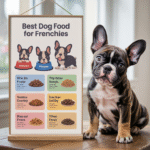


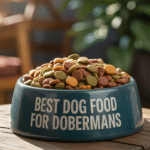


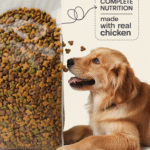
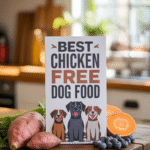

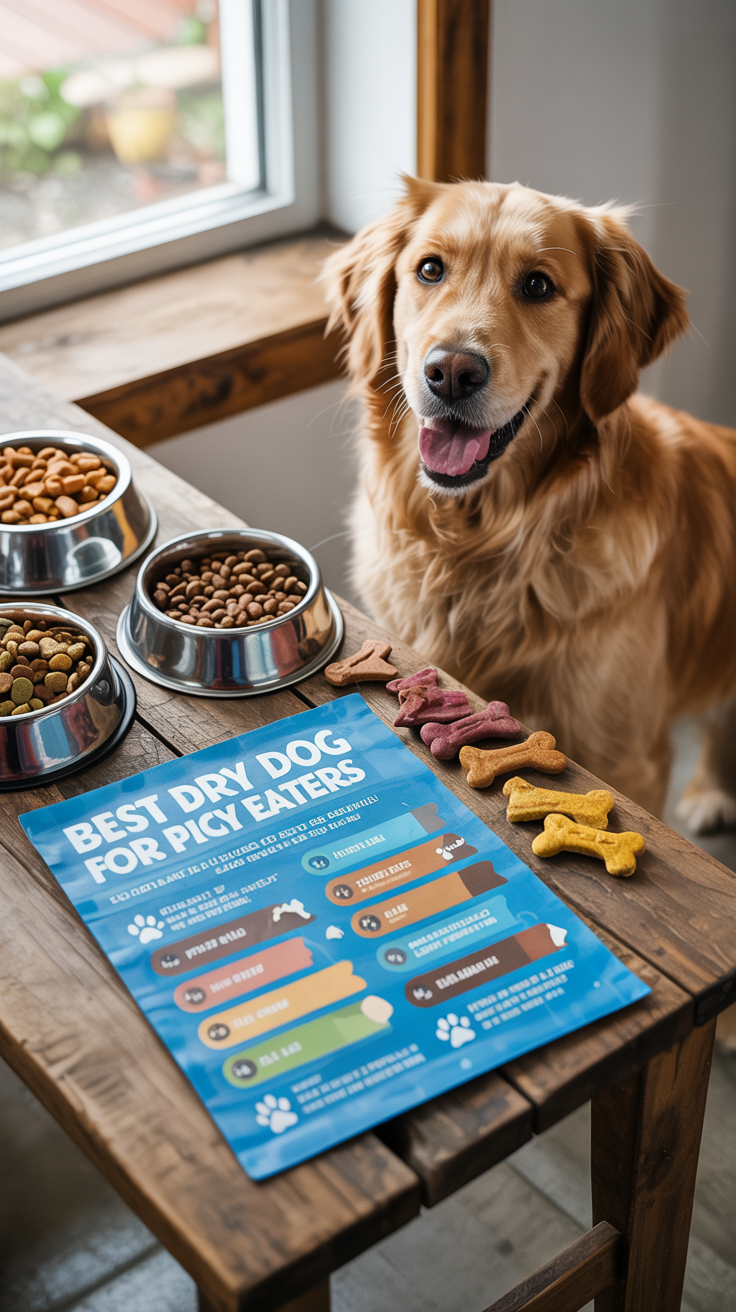
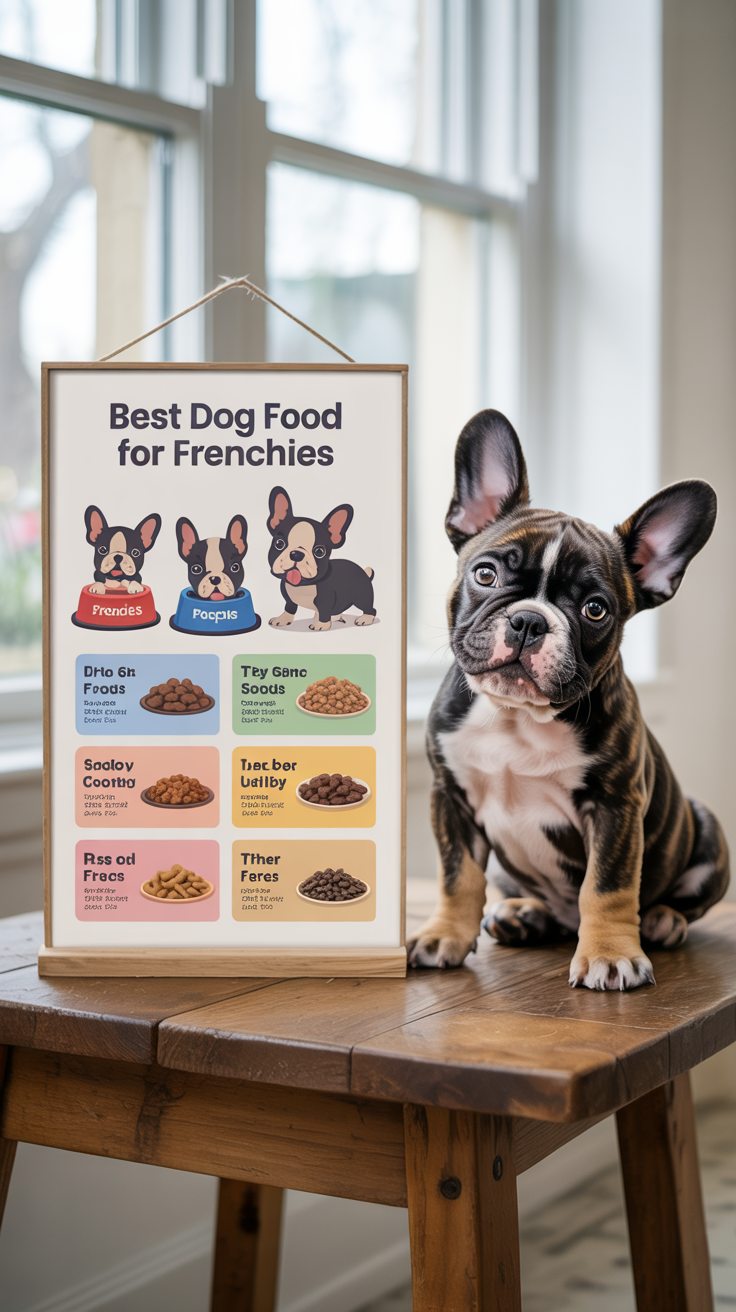
Leave a Reply